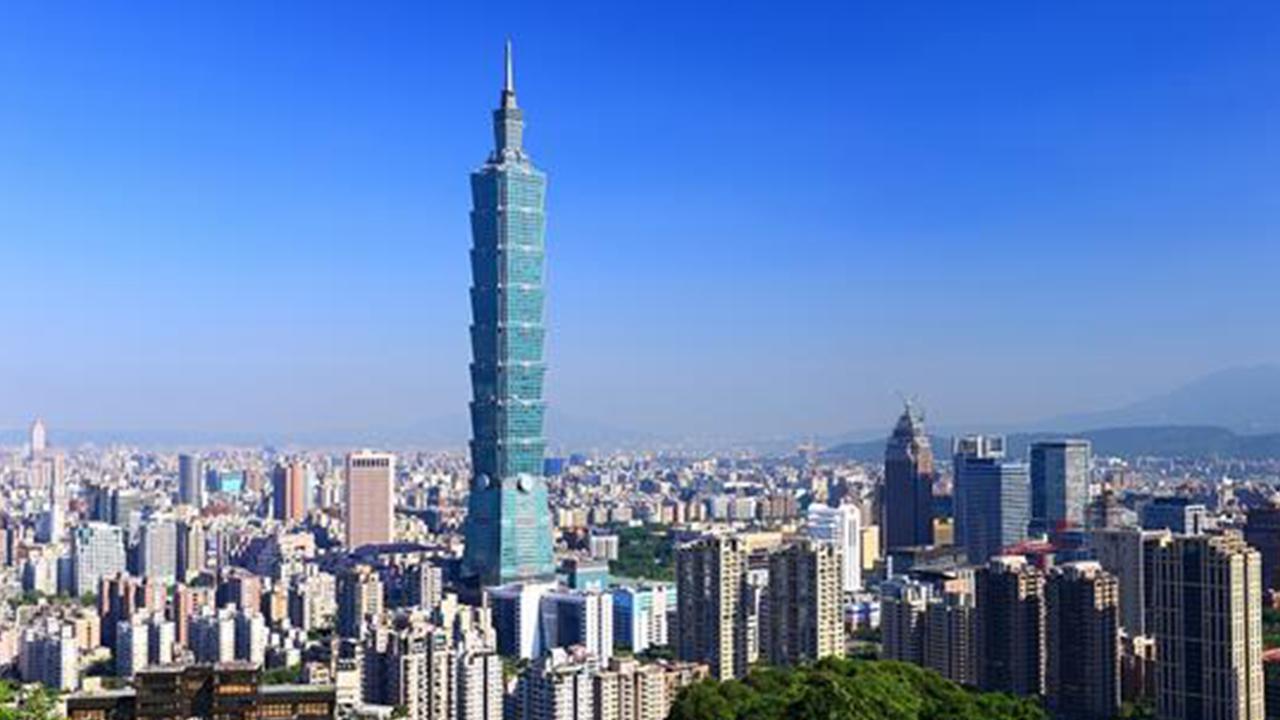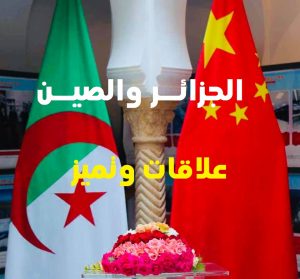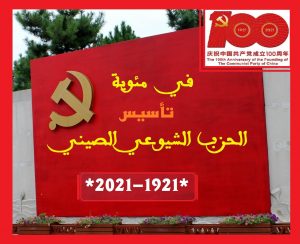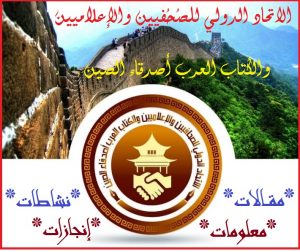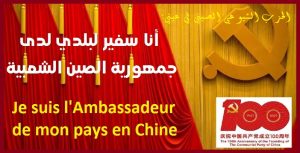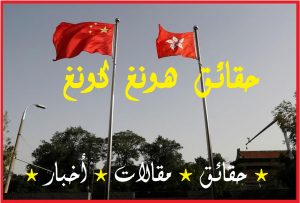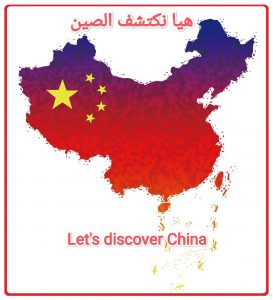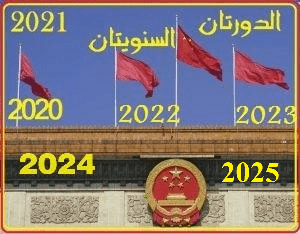شبكة طريق الحرير الإخبارية/
الصين تصدر كتابا أبيض بشأن
“مسألة تايوان وإعادة التوحيد في العصر الجديد”
أصدر مكتب شؤون تايوان التابع لمجلس الدولة ومكتب الإعلام بمجلس الدولة بجمهورية الصين الشعبية كتابا أبيض بعنوان “مسألة تايوان وإعادة توحيد الصين في العصر الجديد” اليوم الأربعاء.
وصدر الكتاب الأبيض للتأكيد على حقيقة أن تايوان جزء من الصين، بغية إظهار عزم الحزب الشيوعي الصيني والشعب الصيني وتمسكهما بإعادة التوحيد الوطني، وللتأكيد على موقف وسياسات الحزب الشيوعي الصيني والحكومة الصينية في العصر الجديد.
إن تايوان تنتمي إلى الصين منذ العصور القديمة. وهذا القول له أساس تاريخي وقانوني سليم، وفقا للكتاب الأبيض.
وقال الكتاب الأبيض إن القرار رقم 2758 الصادر عن الجمعية العامة للأمم المتحدة هو وثيقة سياسية تلخص مبدأ الصين الواحدة، ولا تترك سلطتها القانونية مجالا للشك وقد تم الاعتراف بها في جميع أنحاء العالم.
وذكر الكتاب الأبيض أن مبدأ الصين الواحدة يمثل الإجماع العام للمجتمع الدولي، كما أنه يتفق مع القواعد الأساسية للعلاقات الدولية.
وأضاف الكتاب الأبيض “نحن صين واحدة، وتايوان جزء من الصين. وهذه حقيقة لا جدال فيها يدعمها التاريخ والقانون. وتايوان لم تكن أبدا دولة؛ ووضعها كجزء من الصين غير قابل للتغيير”.
وتابع أن الحزب الشيوعي الصيني ملتزم بالمهمة التاريخية المتمثلة في حل مسألة تايوان وتحقيق إعادة التوحيد الكامل للصين. وتحت قيادته الحازمة، عمل الناس على جانبي مضيق تايوان معا لتهدئة التوتر عبر المضيق. وانطلقوا في طريق التنمية السلمية وحققوا العديد من الاختراقات على صعيد تحسين العلاقات عبر المضيق.
وبتوجيه من الحزب الشيوعي الصيني، تم إحراز تقدم كبير في العلاقات عبر المضيق خلال العقود السبعة الماضية، خاصة منذ انتهاء القطيعة بين الجانبين. وجلبت التبادلات المتزايدة والتعاون الأوسع والتفاعلات الأوثق فوائد ملموسة للناس عبر المضيق، وخاصة تايوان، ما يوضح بشكل كامل أن الصداقة والتعاون عبر المضيق يحققان المنفعة المتبادلة، وفقا للكتاب الأبيض.
واستطرد الكتاب الأبيض “إن تحقيق إعادة التوحيد الوطني الكامل مدفوع بتاريخ وثقافة الأمة الصينية ويتحدد من خلال الزخم والظروف المتعلقة بإحياء النهضة العظيمة للأمة الصينية. ولم نكن أبدا قريبين جدا وواثقين وقادرين على تحقيق هدف إحياء النهضة العظيمة للأمة الصينية مثلما نحن عليه الآن. وينطبق الشيء نفسه عندما يتعلق الأمر بهدفنا المتمثل في إعادة التوحيد الوطني الكامل”.
وذكر الكتاب الأبيض أن التنمية والتقدم فى الصين، وخاصة الإنجازات العظيمة على مدى أربعة عقود من الإصلاح والانفتاح والتحديث، كان لها تأثير عميق على العملية التاريخية لحل مسألة تايوان وتحقيق إعادة التوحيد الوطني الكامل.
وأدت افعال سلطات الحزب الديمقراطي التقدمي إلى توتر العلاقات عبر المضيق، مما يعرض السلام والاستقرار في مضيق تايوان للخطر، ويقوض الآفاق ويحد من مجال إعادة التوحيد السلمي، ومن ثم يجب إزالة هذه العقبات لدفع عملية إعادة التوحيد السلمي، وفقا للكتاب الأبيض.
ولفت الكتاب الأبيض إلى أن القوى الخارجية شجعت وحرضت على الأعمال الاستفزازية للقوى الانفصالية؛ وقد أدى ذلك إلى تكثيف التوتر والمواجهة عبر المضيق، وتقويض السلام والاستقرار في منطقة آسيا والمحيط الهادئ، مضيفا أن هذا يتعارض مع الاتجاهات العالمية الأساسية للسلام والتنمية والتعاون المربح للجميع، ويتعارض مع رغبات المجتمع الدولي وتطلعات جميع الشعوب.
وأشار الكتاب الأبيض إلى أن الاعتماد على القوى الخارجية لن يحقق شيئا للانفصاليين في تايوان، وأن استخدام تايوان لاحتواء الصين محكوم عليه بالفشل، وأن عجلة التاريخ تمضي نحو إعادة التوحيد الوطني، ولن يوقفها أي فرد أو أي قوة.
إن إعادة التوحيد السلمي و”دولة واحدة ونظامان” هما مبدآنا الأساسيان لحل مسألة تايوان وأفضل نهج لتحقيق إعادة التوحيد الوطني، وهما تجسيد للحكمة الصينية القائلة: “نزدهر من خلال احتضان بعضنا البعض”، ويأخذان في الاعتبار بشكل كامل واقع تايوان ويساعدان على الاستقرار طويل الأجل في تايوان بعد إعادة التوحيد، وفقا للكتاب الأبيض.
وذكر الكتاب الأبيض أنه “لتحقيق إعادة التوحيد السلمي، يجب أن نعترف بأن البر الرئيسي وتايوان يتباينان من حيث النظام الاجتماعي والأيديولوجية. ويعد مبدأ ‘دولة واحدة ونظامان’ هو الحل الأكثر شمولا لهذه المشكلة، كما يعد نهجا يرتكز على المبادئ الديمقراطية، ويظهر حسن النية، ويسعى إلى حل سلمي لمسألة تايوان، ويحقق المنفعة المتبادلة. وإن الاختلافات في النظام الاجتماعي ليست عقبة أمام إعادة التوحيد ولا مبررا للانفصالية”.
ونوه الكتاب الأبيض “نحن مستعدون لخلق مساحة واسعة لإعادة التوحيد السلمي؛ لكننا لن نترك أي مجال للأنشطة الانفصالية بأي شكل من الأشكال”.
وأضاف “سنعمل بأكبر قدر من الإخلاص ونبذل قصارى جهدنا لتحقيق إعادة التوحيد السلمي. لكننا لن نتخلى عن استخدام القوة، ونحتفظ بخيار اتخاذ جميع الإجراءات اللازمة. وذلك للوقاية من التدخل الخارجي وجميع الأنشطة الانفصالية. ولا يستهدف ذلك بأي شكل من الأشكال إخواننا الصينيين في تايوان. وسيكون استخدام القوة هو الملاذ الأخير الذي يُتخذ في ظل الظروف القهرية”.
وأشار الكتاب الأبيض إلى أن مستقبل تايوان يكمن في إعادة توحيد الصين، ورفاهية الشعب في تايوان تتوقف على إحياء النهضة العظيمة للأمة الصينية، مضيفا “سوف نتعاون مع إخواننا الصينيين في تايوان للسعي من أجل إعادة التوحيد الوطني وإحياء النهضة العظيمة للأمة الصينية”.
وبمجرد تحقيق إعادة التوحيد السلمي في ظل مبدأ “دولة واحدة ونظامان”، سيرسي ذلك أسسا جديدة للصين لتحقيق مزيد من التقدم وإحياء النهضة العظيمة للأمة الصينية. وفي الوقت نفسه، سيخلق فرصا هائلة للتنمية الاجتماعية والاقتصادية في تايوان وسيحقق فوائد ملموسة لسكان تايوان، وفقا للكتاب الأبيض.
وذكر الكتاب الأبيض أن إعادة التوحيد السلمى عبر المضيق لن تعود بالفائدة على الأمة الصينية فحسب، بل ستعود بالنفع على جميع الشعوب والمجتمع الدولى كله.
*****
The Taiwan Question and China’s Reunification in the New Era
The People’s Republic of China
The Taiwan Affairs Office of the State Council and The State Council Information Office
August 2022
Contents
Preamble
- Taiwan Is Part of China – This Is an Indisputable Fact
- Resolute Efforts of the CPC to Realize China’s Complete Reunification
III. China’s Complete Reunification Is a Process That Cannot Be Halted
- National Reunification in the New Era
- Bright Prospects for Peaceful Reunification
Conclusion
Preamble
Resolving the Taiwan question and realizing China’s complete reunification is a shared aspiration of all the sons and daughters of the Chinese nation. It is indispensable for the realization of China’s rejuvenation. It is also a historic mission of the Communist Party of China (CPC). The CPC, the Chinese government, and the Chinese people have striven for decades to achieve this goal.
The 18th National Congress of the CPC in 2012 heralded a new era in building socialism with Chinese characteristics. Under the strong leadership of the CPC Central Committee with Xi Jinping at the core, the CPC and the Chinese government have adopted new and innovative measures in relation to Taiwan. They have continued to chart the course of cross-Straits relations, safeguard peace and stability across the Taiwan Straits, and promote progress towards national reunification. However, in recent years the Taiwan authorities, led by the Democratic Progressive Party (DPP), have redoubled their efforts to divide the country, and some external forces have tried to exploit Taiwan to contain China, prevent the Chinese nation from achieving complete reunification, and halt the process of national rejuvenation.
The CPC has united the Chinese people and led them in fulfilling the First Centenary Goal of building a moderately prosperous society in all respects as scheduled, and in embarking on a new journey towards the Second Centenary Goal of building China into a modern socialist country.
The Chinese nation has achieved a historic transformation from standing upright to becoming prosperous and growing in strength, and national rejuvenation is driven by an unstoppable force. This marks a new starting point for reunification.
The Chinese government has published two previous white papers on Taiwan. One was The Taiwan Question and Reunification of China in August 1993, and the other was The One-China Principle and the Taiwan Issue in February 2000. These two white papers provided a comprehensive and systematic elaboration of the basic principles and policies regarding the resolution of the Taiwan question. This new white paper is being released to reiterate the fact that Taiwan is part of China, to demonstrate the resolve of the CPC and the Chinese people and their commitment to national reunification, and to emphasize the position and policies of the CPC and the Chinese government in the new era.
- Taiwan Is Part of China – This Is an Indisputable Fact
Taiwan has belonged to China since ancient times. This statement has a sound basis in history and jurisprudence. New archeological discoveries and research findings regularly attest to the profound historical and cultural ties between the two sides of the Taiwan Straits. A large number of historical records and annals document the development of Taiwan by the Chinese people in earlier periods.
The earliest references to this effect are to be found, among others, in Seaboard Geographic Gazetteer compiled in the year 230 by Shen Ying of the State of Wu during the Three Kingdoms Period. The royal court of the Sui Dynasty had on three occasions sent troops to Taiwan, called Liuqiu at that time. Starting from the Song and Yuan dynasties, the imperial central governments of China all set up administrative bodies to exercise jurisdiction over Penghu and Taiwan.
In 1624, Dutch colonialists invaded and occupied the southern part of Taiwan. In 1662, General Zheng Chenggong, hailed as a national hero, led an expedition and expelled them from the island. Subsequently, the Qing court gradually set up more administrative bodies in Taiwan. In 1684, a Taiwan prefecture administration was set up under the jurisdiction of Fujian Province. In 1885, Taiwan’s status was upgraded and it became the 20th province of China.
In July 1894, Japan launched a war of aggression against China. In April 1895, the defeated Qing government was forced to cede Taiwan and the Penghu Islands to Japan. During the Chinese People’s War of Resistance Against Japanese Aggression (1931-1945), China’s Communists called for the recovery of Taiwan. Talking with American journalist Nym Wales on May 15, 1937, Mao Zedong said that China’s goal was to achieve a final victory in the war – a victory that would recover the occupied Chinese territories in Northeast China and to the south of the Shanhai Pass, and secure the liberation of Taiwan.
On December 9, 1941, the Chinese government issued a declaration of war against Japan, and proclaimed that all treaties, conventions, agreements, and contracts regarding relations between China and Japan had been abrogated, and that China would recover Taiwan and the Penghu Islands.
The Cairo Declaration issued by China, the United States and the United Kingdom on December 1, 1943 stated that it was the purpose of the three allies that all the territories Japan had stolen from China, such as Northeast China, Taiwan and the Penghu Islands, should be restored to China.
The Potsdam Proclamation was signed by China, the United States and the United Kingdom on July 26, 1945, and subsequently recognized by the Soviet Union. It reiterated: “The terms of the Cairo Declaration shall be carried out.” In September of the same year, Japan signed the instrument of surrender, in which it promised that it would faithfully fulfill the obligations laid down in the Potsdam Proclamation. On October 25 the Chinese government announced that it was resuming the exercise of sovereignty over Taiwan, and the ceremony to accept Japan’s surrender in Taiwan Province of the China war theater of the Allied powers was held in Taibei (Taipei). From that point forward, China had recovered Taiwan de jure and de facto through a host of documents with international legal effect.
On October 1, 1949, the People’s Republic of China (PRC) was founded, becoming the successor to the Republic of China (1912-1949), and the Central People’s Government became the only legitimate government of the whole of China. The new government replaced the previous KMT regime in a situation where China, as a subject under international law, did not change and China’s sovereignty and inherent territory did not change. As a natural result, the government of the PRC should enjoy and exercise China’s full sovereignty, which includes its sovereignty over Taiwan.
As a result of the civil war in China in the late 1940s and the interference of external forces, the two sides of the Taiwan Straits have fallen into a state of protracted political confrontation. But the sovereignty and territory of China have never been divided and will never be divided, and Taiwan’s status as part of China’s territory has never changed and will never be allowed to change.
At its 26th session in October 1971, the United Nations General Assembly adopted Resolution 2758, which undertook “to restore all its rights to the People’s Republic of China and to recognize the representatives of its Government as the only legitimate representatives of China to the United Nations, and to expel forthwith the representatives of Chiang Kai-shek from the place which they unlawfully occupy at the United Nations and in all the organizations related to it”. This resolution settled once and for all the political, legal and procedural issues of China’s representation in the UN, and it covered the whole country, including Taiwan. It also spelled out that China has one single seat in the UN, so there is no such thing as “two Chinas” or “one China, one Taiwan”.
The specialized agencies of the UN later adopted further resolutions restoring to the PRC its lawful seat and expelling the representatives of the Taiwan authorities. One of these is Resolution 25.1 adopted at the 25th World Health Assembly in May 1972. It was clearly stated in the official legal opinions of the Office of Legal Affairs of the UN Secretariat that “the United Nations considers ‘Taiwan’ as a province of China with no separate status”, and the “‘authorities’ in ‘Taipei’ are not considered to… enjoy any form of government status”. At the UN the island is referred to as “Taiwan, Province of China”[1].
Resolution 2758 is a political document encapsulating the one-China principle whose legal authority leaves no room for doubt and has been acknowledged worldwide. Taiwan does not have any ground, reason, or right to join the UN, or any other international organization whose membership is confined to sovereign states.
In recent years some elements in a small number of countries, the US foremost among them, have colluded with forces in Taiwan, to falsely claim that the resolution did not conclusively resolve the issue of Taiwan’s representation. Puffing up the illegal and invalid Treaty of San Francisco[2] and disregarding the Cairo Declaration, the Potsdam Proclamation and other international legal documents, they profess that the status of Taiwan has yet to be determined, and declare their support for “Taiwan’s meaningful participation in the UN system”. What they are actually attempting to do is to alter Taiwan’s status as part of China and create “two Chinas” or “one China, one Taiwan” as part of a political ploy – using Taiwan to contain China. These actions in violation of Resolution 2758 and international law are a serious breach of political commitments made by these countries. They damage China’s sovereignty and dignity, and treat the basic principles of international law with contempt. The Chinese government has condemned and expressed its resolute opposition to them.
The one-China principle represents the universal consensus of the international community; it is consistent with the basic norms of international relations. To date, 181 countries including the United States have established diplomatic relations with the PRC on the basis of the one-China principle. The China-US Joint Communique on the Establishment of Diplomatic Relations, published in December 1978, states: “The Government of the United States of America acknowledges the Chinese position that there is but one China and Taiwan is part of China.” It also states: “The United States of America recognizes the Government of the People’s Republic of China as the sole legal Government of China. Within this context, the people of the United States will maintain cultural, commercial, and other unofficial relations with the people of Taiwan.”
The Constitution of the People’s Republic of China, adopted at the Fifth Session of the Fifth National People’s Congress (NPC) in December 1982, stipulates: “Taiwan is part of the sacred territory of the People’s Republic of China. It is the inviolable duty of all Chinese people, including our compatriots in Taiwan, to accomplish the great task of reunifying the motherland.”
The Anti-Secession Law, adopted at the Third Session of the 10th NPC in March 2005, stipulates: “There is only one China in the world. Both the mainland and Taiwan belong to one China. China’s sovereignty and territorial integrity brook no division. Safeguarding China’s sovereignty and territorial integrity is the common obligation of all Chinese people, the Taiwan compatriots included. Taiwan is part of China. The state shall never allow the ‘Taiwan independence’ secessionist forces to make Taiwan secede from China under any name or by any means.”
The National Security Law, adopted at the 15th meeting of the Standing Committee of the 12th NPC in July 2015, stipulates: “The sovereignty and territorial integrity of China brook no violation or separation. Safeguarding national sovereignty, unity and territorial integrity is the common duty of all Chinese citizens, including Hong Kong, Macao and Taiwan compatriots.”
We are one China, and Taiwan is part of China. This is an indisputable fact supported by history and the law. Taiwan has never been a state; its status as part of China is unalterable. Any attempt to distort these facts and dispute or deny the one-China principle will end in failure.
- Resolute Efforts of the CPC to Realize China’s Complete Reunification
The CPC has always been dedicated to working for the wellbeing of the Chinese people and the rejuvenation of the Chinese nation. Soon after its founding in 1921, the CPC set itself the goal of freeing Taiwan from colonial rule, reuniting it with the rest of the country and liberating the whole nation, including compatriots in Taiwan. It has made a tremendous effort to achieve this goal.
The CPC is committed to the historic mission of resolving the Taiwan question and realizing China’s complete reunification. Under its resolute leadership, people on both sides of the Taiwan Straits have worked together to de-escalate tension across the Straits. They have set out on a path of peaceful development and made many breakthroughs in improving cross-Straits relations.
After the founding of the PRC in 1949, China’s Communists, under the leadership of Mao Zedong, proposed the essential guideline, underlying principle, and basic policy for peaceful settlement of the Taiwan question. The CPC prepared and worked for the liberation of Taiwan, thwarted the Taiwan authorities’ plans to attack the mainland, and foiled attempts to create “two Chinas” and “one China, one Taiwan”. Through their efforts, the lawful seat and rights of the PRC in the United Nations were restored and the one-China principle was subscribed to by the majority of countries, laying important groundwork for peaceful reunification. The CPC central leadership established high-level contact with the Taiwan authorities through proper channels in pursuit of a peaceful solution to the Taiwan question.
Following the Third Plenary Session of the 11th CPC Central Committee in 1978, with the establishment of diplomatic relations between the PRC and the United States, China’s Communists, led by Deng Xiaoping, defined the fundamental guideline for peaceful reunification in the vital interests of the country and the people and on the basis of the consensus for peaceful settlement of the Taiwan question. The CPC introduced the creative and well-conceived concept of One Country, Two Systems, and applied it first in resolving the questions of Hong Kong and Macao. It took action to ease military confrontation across the Taiwan Straits, restore contact, and open up people-to-people exchanges and cooperation, opening a new chapter in cross-Straits relations.
After the Fourth Plenary Session of the 13th CPC Central Committee in 1989, China’s Communists, led by Jiang Zemin, made eight proposals for the development of cross-Straits relations and the peaceful reunification of China[3]. The CPC facilitated agreement across the Straits on the 1992 Consensus, which embodies the one-China principle. It initiated cross-Straits consultations and negotiations, resulting in the first talks between heads of the non-governmental organizations authorized by the two sides of the Straits, and expanded cross-Straits exchanges and cooperation in various fields. The CPC took firm action against separatist activities led by Lee Teng-hui, and struck hard at the separatist forces seeking “Taiwan independence”. It ensured the smooth return of Hong Kong and Macao to China, and applied the policy of One Country, Two Systems, which had a constructive impact on the settlement of the Taiwan question.
After the 16th CPC National Congress in 2002, China’s Communists, led by Hu Jintao, highlighted the importance of peaceful development of cross-Straits relations. The CPC pushed for the enactment of the Anti-Secession Law to curb separatist activities in Taiwan, hosted the first talks between the leaders of the CPC and the Kuomintang in six decades since 1945, and defeated attempts by Chen Shui-bian to fabricate a legal basis for “independence”. The CPC effected profound changes in moving the peaceful development of cross-Straits relations forward by promoting institutionalized consultations and negotiations that produced fruitful results, establishing overall direct two-way links in mail, business and transport, and facilitating the signing and implementation of the Economic Cooperation Framework Agreement.
After the 18th CPC National Congress in 2012, China’s Communists, under the leadership of Xi Jinping, took a holistic approach to cross-Straits relations in keeping with changing circumstances, added substance to the theory on national reunification and the principles and policies concerning Taiwan, and worked to keep cross-Straits relations on the right track. The CPC developed its overall policy for resolving the Taiwan question in the new era, and set out the overarching guideline and a program of action.
At its 19th National Congress in October 2017, the CPC affirmed the basic policy of upholding One Country, Two Systems and promoting national reunification, and emphasized its resolve never to allow any person, any organization, or any political party, at any time or in any form, to separate any part of Chinese territory from China.
In January 2019, Xi Jinping, general secretary of the CPC Central Committee and president of China, addressed a meeting marking the 40th anniversary of the release of the Message to Compatriots in Taiwan. In his speech, Xi Jinping proposed major policies to advance the peaceful development of cross-Straits relations and the peaceful reunification of China in the new era. These are: first, working together to promote China’s rejuvenation and its peaceful reunification; second, seeking a Two Systems solution to the Taiwan question and making innovative efforts towards peaceful reunification; third, abiding by the one-China principle and safeguarding the prospects for peaceful reunification; fourth, further integrating development across the Straits and consolidating the foundations for peaceful reunification; fifth, forging closer bonds of heart and mind between people on both sides of the Straits and strengthening joint commitment to peaceful reunification.
The CPC and the Chinese government have thereby adopted a series of major measures for charting the course of cross-Straits relations and realizing China’s peaceful reunification:
– The CPC and the Chinese government have facilitated the first meeting and direct dialogue between leaders of the two sides since 1949, raising exchanges and interactions to new heights, opening up a new chapter, and creating new space for cross-Straits relations. This is a new milestone. The departments in charge of cross-Straits affairs on both sides have established regular contact and communication mechanisms on a common political foundation, and the heads of the two departments have exchanged visits and set up hotlines.
– Upholding the one-China principle and the 1992 Consensus, the CPC and the Chinese government have facilitated exchanges between political parties across the Straits, and conducted dialogues, consultations, and in-depth exchanges of views on cross-Straits relations and the future of the Chinese nation with relevant political parties, organizations, and individuals in Taiwan. These efforts have resulted in consensus on multiple issues, and promoted a number of joint initiatives exploring the Two Systems solution to the Taiwan question with all sectors of Taiwan society.
– Guided by the conviction that people on both sides of the Taiwan Straits are of the same family, the CPC and the Chinese government have promoted peaceful development of cross-Straits relations and integrated development of the two sides for the benefit of both the mainland and Taiwan. We have also refined the institutional arrangements, policies and measures to promote cross-Straits exchanges and cooperation, designed to advance the wellbeing of the people of Taiwan. These include the delivery of water from the coastal province of Fujian to Kinmen Island, electronic travel passes for Taiwan residents to enter or leave the mainland, residence permits for Taiwan residents, progressively ensuring that Taiwan compatriots have equal access to public services so as to facilitate their studying, starting businesses, working and living on the mainland, and an ongoing effort to pave the way for Taiwan to benefit first from the mainland’s development opportunities.
– While countering interference and obstruction from separatist forces, the CPC and the Chinese government have called on the people of Taiwan to promote effective and in-depth cooperation and people-to-people exchanges in various fields across the Straits. Having overcome the impact of COVID-19, we have held a number of exchange events such as the Straits Forum, and maintained the momentum of cross-Straits exchanges and cooperation.
– Resolute in defending state sovereignty and territorial integrity and opposing separatist activities and external interference, the CPC and the Chinese government have safeguarded peace and stability in the Taiwan Straits and the fundamental interests of the Chinese nation. We have taken lawful action against and effectively deterred separatist forces. We have handled Taiwan’s external exchanges in a sound manner, and consolidated the international community’s commitment to the one-China principle.
Under the guidance of the CPC, great progress has been made in cross-Straits relations over the past seven decades, especially since the estrangement between the two sides was ended. Increased exchanges, broader cooperation and closer interactions have brought tangible benefits to people across the Straits, especially of Taiwan. This fully demonstrates that cross-Straits amity and cooperation are mutually beneficial.
The volume of cross-Straits trade was only US$46 million in 1978. It rose to US$328.34 billion in 2021, up by a factor of more than 7,000. The mainland has been Taiwan’s largest export market for the last 21 years, generating a large annual surplus for the island. The mainland is also the largest destination for Taiwan’s off-island investment. By the end of 2021 Taiwan businesses had invested in almost 124,000 projects on the mainland, to a total value of US$71.34 billion[4].
In 1987 less than 50,000 visits were made between the two sides; by 2019 this number had soared to about 9 million. In the past three years, affected by COVID-19, online communication has become the main form of people-to-people interactions across the Straits, and the numbers of people participating in and covered by online communication are reaching new highs.
The CPC has always been the spine of the Chinese nation, exercising strong leadership in realizing national rejuvenation and reunification. Its consistent efforts over the decades to resolve the Taiwan question and achieve complete national reunification are based on the following:
First, the one-China principle must be upheld, and no individual or force should be allowed to separate Taiwan from China.
Second, it is imperative to strive for the wellbeing of all Chinese people, including those in Taiwan, and to realize the aspirations of all Chinese people for a better life.
Third, we must follow the principles of freeing the mind, seeking truth from facts, maintaining the right political orientation, and breaking new ground, and defend the fundamental interests of the nation and the core interests of the state in formulating principles and policies on work related to Taiwan.
Fourth, it is necessary to have the courage and skill to fight against any force that attempts to undermine China’s sovereignty and territorial integrity or stands in the way of its reunification.
Fifth, extensive unity and solidarity must be upheld to mobilize all factors to fight against any force that would divide the country, and pool strengths to advance national reunification.
III. China’s Complete Reunification Is a Process That Cannot Be Halted
Against a backdrop of profound and complex changes in the domestic and international situation, our cause of complete national reunification is facing new challenges. The CPC and the Chinese government have the strength and the confidence to deal with complexities and overcome risks and threats, and the ability to take great strides forward on the path to national reunification.
- Complete Reunification Is Critical to National Rejuvenation
Throughout China’s 5,000-year history, national reunification and opposition to division have remained a common ideal and a shared tradition of the whole nation. In the modern era from the mid-19th century, due to the aggression of Western powers and the decadence of feudal rule, China was gradually reduced to a semi-feudal, semi-colonial society, and went through a period of suffering worse than anything it had previously known. The country endured intense humiliation, the people were subjected to great pain, and the Chinese civilization was plunged into darkness. Japan’s 50-year occupation of Taiwan epitomized this humiliation and inflicted agony on both sides of the Taiwan Straits. Our two sides face each other just across a strip of water, yet we are still far apart. The fact that we have not yet been reunified is a scar left by history on the Chinese nation. We Chinese on both sides should work together to achieve reunification and heal this wound.
National rejuvenation has been the greatest dream of the Chinese people and the Chinese nation since the modern era began. Only by realizing complete national reunification can the Chinese people on both sides of the Straits cast aside the shadow of civil war and create and enjoy lasting peace. National reunification is the only way to avoid the risk of Taiwan being invaded and occupied again by foreign countries, to foil the attempts of external forces to contain China, and to safeguard the sovereignty, security, and development interests of our country. It is the most effective remedy to secessionist attempts to divide our country, and the best means to consolidate Taiwan’s status as part of China and advance national rejuvenation. It will enable us to pool the strengths of the people on both sides, build our common home, safeguard our interests and wellbeing, and create a brighter future for the Chinese people and the Chinese nation. As Dr Sun Yat-sen, the great pioneer of China’s revolution, once said, “Unification is the hope of all Chinese nationals. If China can be unified, all Chinese will enjoy a happy life; if it cannot, all will suffer.”
In exploring the path to rejuvenation and prosperity, China has endured vicissitudes and hardships. “Unification brings strength while division leads to chaos.” This is a law of history. The realization of complete national reunification is driven by the history and culture of the Chinese nation and determined by the momentum towards and circumstances surrounding our national rejuvenation. Never before have we been so close to, confident in, and capable of achieving the goal of national rejuvenation. The same is true when it comes to our goal of complete national reunification. The Taiwan question arose as a result of weakness and chaos in our nation, and it will be resolved as national rejuvenation becomes a reality. When all the Chinese people stick together and work together, we will surely succeed in realizing national reunification on our way to national rejuvenation.
- National Development and Progress Set the Direction of Cross-Straits Relations
China’s development and progress are a key factor determining the course of cross-Straits relations and the realization of complete national reunification. In particular, the great achievements over four decades of reform, opening up and modernization have had a profound impact on the historical process of resolving the Taiwan question and realizing complete national reunification. No matter which political party or group is in power in Taiwan, it cannot alter the course of progress in cross-Straits relations or the trend towards national reunification.
International Monetary Fund statistics show that in 1980 the GDP of the mainland was about US$303 billion, just over 7 times that of Taiwan, which was about US$42.3 billion; in 2021, the GDP of the mainland was about US$17.46 trillion, more than 22 times that of Taiwan, which was about US$790 billion.[5]
China’s development and progress, and in particular the steady increases in its economic power, technological strength, and national defense capabilities, are an effective curb against separatist activities and interference from external forces. They also provide broad space and great opportunities for cross-Straits exchanges and cooperation. As more and more compatriots from Taiwan, especially young people, pursue their studies, start businesses, seek jobs, or go to live on the mainland, cross-Straits exchanges, interaction and integration are intensified in all sectors, the economic ties and personal bonds between the people on both sides run deeper, and our common cultural and national identities grow stronger, leading cross-Straits relations towards reunification.
The CPC has united the Chinese people and led them in embarking on the new journey of building China into a modern socialist country in all respects. Following the path of socialism with Chinese characteristics, the mainland has improved its governance and maintained long-term economic growth; it enjoys a solid material foundation, a wealth of human resources, a huge market, strong resilience in development, and social stability. It therefore has many strengths and favorable conditions for further development, and these have become the driving force for reunification.
Grounding its effort in the new development stage, the mainland is committed to applying the new development philosophy, creating a new development dynamic, and promoting high-quality development. As a result, the overall strength and international influence of the mainland will continue to increase, and its influence over and appeal to Taiwan society will keep growing. We will have a more solid foundation for resolving the Taiwan question and greater ability to do so. This will give a significant boost to national reunification.
- Any Attempt by Separatist Forces to Prevent Reunification Is Bound to Fail
Taiwan has been an integral part of China’s territory since ancient times. Moves to separate Taiwan from China represent the serious crime of secession, and undermine the common interests of compatriots on both sides of the Taiwan Straits and the fundamental interests of the Chinese nation. They will lead nowhere.
The DPP authorities have adopted a separatist stance, and colluded with external forces in successive provocative actions designed to divide the country. They refuse to recognize the one-China principle, and distort and deny the 1992 Consensus. They assert that Taiwan and the mainland should not be subordinate to each other, and proclaim a new “two states” theory. On the island, they constantly press for “de-sinicization” and promote “incremental independence”. They incite radical separatists in and outside the DPP to lobby for amendments to their “constitution” and “laws”. They deceive the people of Taiwan, incite hostility against the mainland, and obstruct and undermine cross-Straits exchanges, cooperation and integrated development. They have steadily built up their military forces with the intention of pursuing “independence” and preventing reunification by force. They join with external forces in trying to sow the seeds of “two Chinas” or “one China, one Taiwan”. The actions of the DPP authorities have resulted in tension in cross-Straits relations, endangering peace and stability in the Taiwan Straits, and undermining the prospects and restricting the space for peaceful reunification. These are obstacles that must be removed in advancing the process of peaceful reunification.
Taiwan belongs to all the Chinese people, including the 23 million Taiwan compatriots. The Chinese people are firm in their resolve and have a deep commitment to safeguarding China’s sovereignty and territorial integrity, and the fundamental interests of the Chinese nation, and this resolve and commitment will frustrate any attempt to divide the country. When Taiwan was invaded by a foreign power more than 100 years ago, China was a poor and weak country. More than 70 years ago, China defeated the invaders and recovered Taiwan. Today, China has grown into the world’s second largest economy. With significant growth in its political, economic, cultural, technological, and military strength, there is no likelihood that China will allow Taiwan to be separated again. Attempts to reject reunification and split the country are doomed, because they will founder against the history and culture of the Chinese nation as well as the resolve and commitment of more than 1.4 billion Chinese people.
- External Forces Obstructing China’s Complete Reunification Will Surely Be Defeated
External interference is a prominent obstacle to China’s reunification. Still lost in delusions of hegemony and trapped in a Cold War mindset, some forces in the US insist on perceiving and portraying China as a major strategic adversary and a serious long-term threat. They do their utmost to undermine and pressurize China, exploiting Taiwan as a convenient tool. The US authorities have stated that they remain committed to the one-China policy and that they do not support “Taiwan independence”. But their actions contradict their words. They are clouding the one-China principle in uncertainty and compromising its integrity. They are contriving “official” exchanges with Taiwan, increasing arms sales, and colluding in military provocation. To help Taiwan expand its “international space”, they are inducing other countries to interfere in Taiwan affairs, and concocting Taiwan-related bills that infringe upon the sovereignty of China. They are creating confusion around what is black and white, right and wrong. On the one hand, they incite separatist forces to create tension and turmoil in cross-Straits relations. On the other hand, they accuse the mainland of coercion, pressurizing Taiwan, and unilaterally changing the status quo, in order to embolden these forces and create obstacles to China’s peaceful reunification.
The important principles of respecting state sovereignty and territorial integrity as enshrined in the Charter of the United Nations are the cornerstones of modern international law and basic norms of international relations. It is the sacred right of every sovereign state to safeguard national unity and territorial integrity. It goes without saying that the Chinese government is entitled to take all measures necessary to settle the Taiwan question and achieve national reunification, free of external interference.
Behind the smokescreens of “freedom, democracy, and human rights” and “upholding the rules-based international order”, some anti-China forces in the US deliberately distort the nature of the Taiwan question – which is purely an internal matter for China – and try to deny the legitimacy and justification of the Chinese government in safeguarding national sovereignty and territorial integrity. This clearly reveals their intention of using Taiwan to contain China and obstruct China’s reunification, which should be thoroughly exposed and condemned.
These external forces are using Taiwan as a pawn to undermine China’s development and progress, and obstruct the rejuvenation of the Chinese nation. They are doing so at the cost of the interests, wellbeing and future of the people of Taiwan rather than for their benefit. They have encouraged and instigated provocative actions by the separatist forces; these have intensified cross-Straits tension and confrontation, and undermined peace and stability in the Asia-Pacific region. This runs counter to the underlying global trends of peace, development and win-win cooperation, and goes against the wishes of the international community and the aspiration of all peoples.
Shortly after the PRC was founded, even though the country itself had to be rebuilt on the ruins of decades of war, China and its people won a resounding victory in the War to Resist US Aggression and Aid Korea (1950-1953). We defeated a powerful and well-armed enemy through gallantry and tenacity. In doing so, we safeguarded the security of the newly founded People’s Republic, reestablished the status of China as a major country in the world, and demonstrated our heroic spirit, our lack of fear, and our will to stand up against the abuse of the powerful.
China is firmly committed to peaceful development. At the same time, it will not flinch under any external interference, nor will it tolerate any infringement upon its sovereignty, security and development interests. Relying on external forces will achieve nothing for Taiwan’s separatists, and using Taiwan to contain China is doomed to fail.
Tranquility, development and a decent life are the expectations of our Taiwan compatriots, and the common aspiration of those on both sides of the Taiwan Straits. Under the strong leadership of the CPC, the Chinese people and the Chinese nation have stood upright, won prosperity, and grown in strength. A moderately prosperous society in all respects has been built on the mainland, where a large population once lived in dire poverty. We now have better conditions, more confidence, and greater capabilities. We can complete the historic mission of national reunification, so that both sides of the Straits can enjoy a better life. The wheel of history rolls on towards national reunification, and it will not be stopped by any individual or any force.
- National Reunification in the New Era
Taking into consideration the overall goal of national rejuvenation in the context of global change on a scale unseen in a century, the CPC and the Chinese government have continued to follow the CPC’s fundamental guidelines on the Taiwan question and implement its principles and policies towards Taiwan, and have made concrete efforts to promote peaceful cross-Straits relations, integrate the development of the two sides, and work towards national reunification.
- Upholding the Basic Principles of Peaceful Reunification and One Country, Two Systems
National reunification by peaceful means is the first choice of the CPC and the Chinese government in resolving the Taiwan question, as it best serves the interests of the Chinese nation as a whole, including our compatriots in Taiwan, and it works best for the long-term stability and development of China. We have worked hard to overcome hardships and obstacles to peaceful reunification over the past decades, showing that we cherish and safeguard the greater good of the nation, the wellbeing of our compatriots in Taiwan, and peace on both sides.
The One Country, Two Systems principle is an important institutional instrument created by the CPC and the Chinese government to enable peaceful reunification. It represents a great achievement of Chinese socialism. Peaceful reunification and One Country, Two Systems are our basic principles for resolving the Taiwan question and the best approach to realizing national reunification. Embodying the Chinese wisdom – we thrive by embracing each other – they take full account of Taiwan’s realities and are conducive to long-term stability in Taiwan after reunification.
We maintain that after peaceful reunification, Taiwan may continue its current social system and enjoy a high degree of autonomy in accordance with the law. The two social systems will develop side by side for a long time to come. One Country is the precondition and foundation of Two Systems; Two Systems is subordinate to and derives from One Country; and the two are integrated under the one-China principle.
We will continue working with our compatriots in Taiwan to explore a Two Systems solution to the Taiwan question and increase our efforts towards peaceful reunification. In designing the specifics for implementing One Country, Two Systems, we will give full consideration to the realities in Taiwan and the views and proposals from all walks of life on both sides, and fully accommodate the interests and sentiments of our compatriots in Taiwan.
Ever since the One Country, Two Systems principle was proposed, certain political forces have been misrepresenting and distorting its objectives. The DPP and the authorities under its leadership have done everything possible to target the principle with baseless criticisms, and this has led to misunderstandings about its aims in some quarters of Taiwan. It is a fact that since Hong Kong and Macao returned to the motherland and were reincorporated into national governance, they have embarked on a broad path of shared development together with the mainland, and each complements the others’ strengths. The practice of One Country, Two Systems has been a resounding success.
For a time, Hong Kong faced a period of damaging social unrest caused by anti-China agitators both inside and outside the region. Based on a clear understanding of the situation there, the CPC and the Chinese government upheld the One Country, Two Systems principle, made some appropriate improvements, and took a series of measures that addressed both the symptoms and root causes of the unrest. Order was restored and prosperity returned to Hong Kong. This has laid a solid foundation for the law-based governance of Hong Kong and Macao and the long-term continuation of One Country, Two Systems.
To realize peaceful reunification, we must acknowledge that the mainland and Taiwan have their own distinct social systems and ideologies. The One Country, Two Systems principle is the most inclusive solution to this problem. It is an approach that is grounded in democratic principles, demonstrates good will, seeks peaceful resolution of the Taiwan question, and delivers mutual benefit. The differences in social system are neither an obstacle to reunification nor a justification for secessionism. We firmly believe that our compatriots in Taiwan will develop a better understanding of the principle, and that the Two Systems solution to the Taiwan question will play its full role while compatriots on both sides work together towards peaceful reunification.
Peaceful reunification can only be achieved through consultation and discussion as equals. The long-standing political differences between the two sides are the fundamental obstacles to the steady improvement of cross-Straits relations, but we should not allow this problem to be passed down from one generation to the next. We can phase in flexible forms of consultation and discussion. We are ready to engage with all parties, groups, or individuals in Taiwan in a broad exchange of views aimed at resolving the political differences between the two sides based on the one-China principle and the 1992 Consensus. Representatives will be recommended by all political parties and all sectors of society on both sides, and they will engage in democratic consultations on peaceful development of cross-Straits relations, integrated development of the two sides, and the peaceful reunification of our country.
- Promoting Peaceful Cross-Straits Relations and Integrated Development
Peaceful cross-Straits relations and integrated development pave the way for reunification and serve to benefit our people on both sides. Thus, both sides should work together towards this goal. We will extend integrated development, increase exchanges and cooperation, strengthen bonds, and expand common interests in the peaceful development of cross-Straits relations. In this way, we will all identify more closely with the Chinese culture and Chinese nation, and heighten the sense of our shared future. This lays solid foundations for peaceful reunification.
We will explore an innovative approach to integrated development and take the lead in setting up a pilot zone for integrated cross-Straits development in Fujian Province, advancing integration through better connectivity and more preferential policies, and based on mutual trust and understanding. Both sides should continue to promote connectivity in any area where it is beneficial, including trade and economic cooperation, infrastructure, energy and resources, and industrial standards. We should promote cooperation in culture, education, and health care, and the sharing of social security and public resources. We should support neighboring areas or areas with similar conditions on the two sides in providing equal, universal, and accessible public services. We should take active steps to institutionalize cross-Straits economic cooperation and create a common market for the two sides to strengthen the Chinese economy.
We will improve the systems and policies to guarantee the wellbeing of Taiwan compatriots and ensure that they are treated as equals on the mainland, and we will protect their legitimate rights and interests here in accordance with the law. We will support our fellow Chinese and enterprises from Taiwan in participating in the Belt and Road Initiative, major regional development strategies, and the strategy for coordinated regional development. We will help them integrate into the new development dynamic, participate in high-quality development, share in more development opportunities, and benefit from national socio-economic development.
We will expand cross-Straits exchanges and cooperation in various fields and overcome any obstacles and obstruction. We will encourage our people on both sides to pass on the best of traditional Chinese culture and ensure that it grows in new and creative ways. We will strengthen communication among the general public and the younger generations on both sides, and encourage more fellow Chinese in Taiwan – young people in particular – to pursue studies, start businesses, seek jobs, or live on the mainland. This will help people on both sides to expand mutual understanding, strengthen mutual trust, consolidate a shared sense of identity, and forge closer bonds of heart and mind.
- Defeating Separatism and External Interference
Separatism will plunge Taiwan into the abyss and bring nothing but disaster to the island. To protect the interests of the Chinese nation as a whole, including our compatriots in Taiwan, we must resolutely oppose it and work for peaceful reunification. We are ready to create vast space for peaceful reunification; but we will leave no room for separatist activities in any form.
We Chinese will decide our own affairs. The Taiwan question is an internal affair that involves China’s core interests and the Chinese people’s national sentiments, and no external interference will be tolerated. Any attempt to use the Taiwan question as a pretext to interfere in China’s internal affairs or obstruct China’s reunification will meet with the resolute opposition of the Chinese people, including our compatriots in Taiwan. No one should underestimate our resolve, will and ability to defend China’s sovereignty and territorial integrity.
We will work with the greatest sincerity and exert our utmost efforts to achieve peaceful reunification. But we will not renounce the use of force, and we reserve the option of taking all necessary measures. This is to guard against external interference and all separatist activities. In no way does it target our fellow Chinese in Taiwan. Use of force would be the last resort taken under compelling circumstances. We will only be forced to take drastic measures to respond to the provocation of separatist elements or external forces should they ever cross our red lines.
We will always be ready to respond with the use of force or other necessary means to interference by external forces or radical action by separatist elements. Our ultimate goal is to ensure the prospects of China’s peaceful reunification and advance this process.
Some forces in the US are making every effort to incite groups inside Taiwan to stir up trouble and use Taiwan as a pawn against China. This has jeopardized peace and stability across the Taiwan Straits, obstructed the Chinese government’s efforts towards peaceful reunification, and undermined the healthy and steady development of China-US relations. Left unchecked, it will continue to escalate tension across the Straits, further disrupt China-US relations, and severely damage the interests of the US itself. The US should abide by the one-China principle, deal with Taiwan-related issues in a prudent and proper manner, stand by its previous commitments, and stop supporting Taiwan separatists.
- Working with Our Fellow Chinese in Taiwan Towards National Reunification and Rejuvenation
National reunification is an essential step towards national rejuvenation. The future of Taiwan lies in China’s reunification, and the wellbeing of the people in Taiwan hinges on the rejuvenation of the Chinese nation, an endeavor that bears on the future and destiny of the people on both sides. A united and prosperous China will be a blessing for all Chinese, while a weak and divided China will be a disaster. Only China’s rejuvenation and prosperity can bring lives of plenty and happiness to both sides. But it requires the joint efforts of both sides, as does the complete reunification of the country.
Separatist propaganda and the unresolved political dispute between the two sides have created misconceptions over cross-Straits relations, problems with national identity, and misgivings over national reunification among some fellow Chinese in Taiwan. Blood is thicker than water, and people on both sides of the Straits share the bond of kinship. We have great patience and tolerance and we will create conditions for closer exchanges and communication between the two sides, and to increase our compatriots’ knowledge of the mainland and reduce these misconceptions and misgivings, in order to help them resist the manipulation of separatists.
We will join hands with our fellow Chinese in Taiwan to strive for national reunification and rejuvenation. We hope they will stand on the right side of history, be proud of their Chinese identity, and fully consider the position and role of Taiwan in China’s rejuvenation. We hope they will pursue the greater good of the nation, resolutely oppose separatism and any form of external interference, and make a positive contribution to the just cause of China’s peaceful reunification.
- Bright Prospects for Peaceful Reunification
Once peaceful reunification is achieved under One Country, Two Systems, it will lay new foundations for China to make further progress and achieve national rejuvenation. At the same time, it will create huge opportunities for social and economic development in Taiwan and bring tangible benefits to the people of Taiwan.
- Taiwan Will Have a Vast Space for Development
Taiwan boasts a high level of economic growth, industries with distinctive local features, and robust foreign trade. Its economy is highly complementary with that of the mainland. After reunification, the systems and mechanisms for cross-Straits economic cooperation will be further improved. Backed up by the vast mainland market, Taiwan’s economy will enjoy broader prospects, become more competitive, develop steadier and smoother industrial and supply chains, and display greater vitality in innovation-driven growth. Many problems that have long afflicted Taiwan’s economy and its people can be resolved through integrated cross-Straits development with all possible connectivity between the two sides. Taiwan’s fiscal revenues can be better employed to improve living standards, bringing real benefits to the people and resolving their difficulties.
Taiwan’s cultural creativity will also enjoy a great boost. Both sides of the Taiwan Straits share the culture and ethos of the Chinese nation. Nourished by the Chinese civilization, Taiwan’s regional culture will flourish and prosper.
- The Rights and Interests of the People in Taiwan Will Be Fully Protected
Provided that China’s sovereignty, security and development interests are guaranteed, after reunification Taiwan will enjoy a high degree of autonomy as a special administrative region. Taiwan’s social system and its way of life will be fully respected, and the private property, religious beliefs, and lawful rights and interests of the people in Taiwan will be fully protected. All Taiwan compatriots who support reunification of the country and rejuvenation of the nation will be the masters of the region, contributing to and benefitting from China’s development. With a powerful motherland in support, the people of Taiwan will enjoy greater security and dignity and stand upright and rock-solid in the international community.
- Both Sides of the Taiwan Straits Will Share the Triumph of National Rejuvenation
The people of Taiwan are brave, diligent and patriotic, and have made unremitting efforts to improve themselves. They revere their ancestry and love their homeland. Working together and applying their talents, people on both sides of the Taiwan Straits will create a promising future. After reunification, we Chinese will bridge gaps and differences caused by long-term separation, share a stronger sense of national identity, and stand together as one. After reunification, we can leverage complementary strengths in pursuit of mutual benefit and common development. After reunification, we can join hands to make the Chinese nation stronger and more prosperous, and stand taller among all the nations of the world.
The people separated by the Taiwan Straits share the same blood and a common destiny. After reunification, China will have greater international influence and appeal, and a stronger ability to shape international public opinion, and the Chinese people will enjoy greater self-esteem, self-confidence and national pride. In Taiwan and on the mainland the people will share the dignity and triumph of a united China and be proud of being Chinese. We will work together to refine and implement the Two Systems solution to the Taiwan question, to improve the institutional arrangements for implementing the One Country, Two Systems policy, and to ensure lasting peace and stability in Taiwan.
- Peaceful Reunification of China Is Conducive to Peace and Development in the Asia-Pacific and the Wider World
Peaceful cross-Straits reunification is of benefit not only to the Chinese nation, but to all peoples and the international community as a whole. The reunification of China will not harm the legitimate interests of any other country, including any economic interests they might have in Taiwan. On the contrary, it will bring more development opportunities to all countries; it will create more positive momentum for prosperity and stability in the Asia-Pacific and the rest of the world; it will contribute more to building a global community of shared future, promoting world peace and development, and propelling human progress.
After reunification, foreign countries can continue to develop economic and cultural relations with Taiwan. With the approval of the central government of China, they may set up consulates or other official and quasi-official institutions in Taiwan, international organizations and agencies may establish offices, relevant international conventions can be applied, and relevant international conferences can be held there.
Conclusion
Over its 5,000-year history, China has created a splendid culture that has shone throughout the world from past times to present, and has made an enormous contribution to human society. After a century of suffering and hardship, the nation has overcome humiliation, emerged from backwardness, and embraced boundless development opportunities. Now, it is striding towards the goal of national rejuvenation.
Embarking on a new journey in a new era, the CPC and the Chinese government will continue to rally compatriots on both sides of the Taiwan Straits, and lead the efforts to answer the call of the times, shoulder historic responsibilities, grasp our fate and our future in our own hands, and work hard to achieve national reunification and rejuvenation.
The journey ahead cannot be all smooth sailing. However, as long as we Chinese on both sides of the Taiwan Straits devote our ingenuity and energy to the same goal, let there be no doubt – we will tolerate no foreign interference in Taiwan, we will thwart any attempt to divide our country, and we will combine as a mighty force for national reunification and rejuvenation. The historic goal of reuniting our motherland must be realized and will be realized.
Notes
[1] United Nations Juridical Yearbook 2010, p. 516.
[2] Between September 4 and 8, 1951, the United States gathered a number of countries in San Francisco for what they described as the San Francisco Peace Conference. Neither the PRC nor the Soviet Union received an invitation. The treaty signed at this meeting, commonly known as the Treaty of San Francisco, included an article under which Japan renounced all rights, title and claim to Taiwan and the Penghu Islands. This treaty contravened the provisions of the Declaration by United Nations signed by 26 countries – including the United States, the United Kingdom, the Soviet Union and China – in 1942, the fundamental principles of the UN Charter, and the basic norms of international law. The PRC was excluded from its preparation, drafting and signing, and its rulings on the territory and sovereign rights of China – including the sovereignty over Taiwan – are therefore illegal and invalid. The Chinese government has always refused to recognize the Treaty of San Francisco, and has never from the outset deviated from this stance. Other countries, including the Soviet Union, Poland, Czechoslovakia, the Democratic People’s Republic of Korea, Mongolia, and Vietnam, have also refused to recognize the document’s authority.
[3] In his speech titled “Continue to Promote the Reunification of the Motherland” on January 30, 1995, Jiang Zemin, then general secretary of the CPC Central Committee and president of China, made eight proposals for the development of cross-Straits relations and peaceful national reunification. He emphasized, “Adhering to the one-China principle is the basis and prerequisite for peaceful reunification”, and “in not promising to renounce the use of force, we are in no way targeting our Taiwan compatriots, but rather foreign forces conspiring to interfere in China’s peaceful reunification and bring about Taiwan independence”. (See Selected Works of Jiang Zemin, Vol. I, Eng. ed., Foreign Languages Press, Beijing, 2009, pp. 407-412.)
[4] This figure does not include reinvestment by Taiwan investors through a third place.
[5] From the statistics of the April 2022 edition of the World Economic Outlook databases of the International Monetary Fund.
